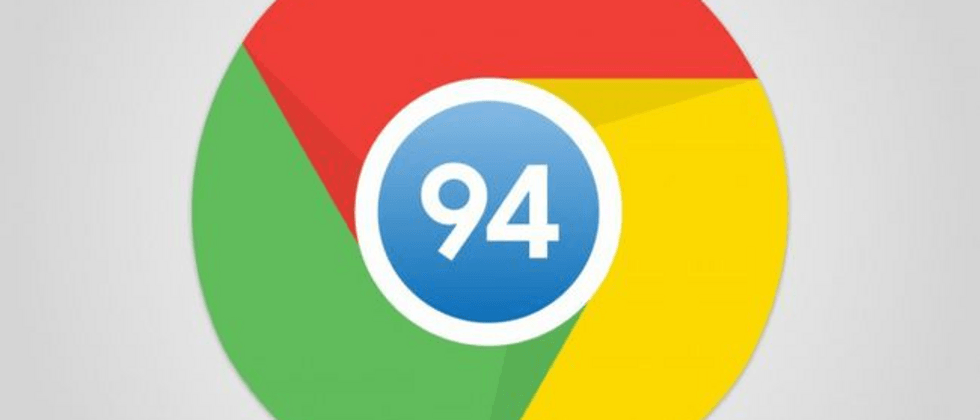Just now, Google officially released the stable version of Chrome 94. As a second update after the release of Chrome 93 version 3 weeks ago, the stable version of Chrome 94 has many small surprises and highlights, although the update rate is relatively small.
Download : 161508f706c4b6 https://www.google.com/intl/zh-CN/chrome/
The new stable version of Chrome 94 has upgraded its formal management of canvas colors and implemented the display capture function strategy in the screen capture specification. At the same time, the new version adds low-level codec APIs around audio/video encoding and decoding and raw video frame processing, virtual keyboard APIs, local scheduling APIs, and idle detection APIs for determining whether users interact with the system.
It is reported that the Webcodes API feature was first introduced in Chrome 93 as a source code trial. The introduction of the Webcodes API in the stable version of Chrome 94 is generally exciting because it has passed the previous trial version of origin. WebCodecs is a low-level codec API around audio/video encoding and decoding and raw video frame processing. WebCodecs API processing is designed to be more efficient than JavaScript or WebAssembly codec implementations.
As early as last month, in the stable version of Chrome 93 released by Google, support for WebOTP was added to the desktop, but the 3DES cipher suite in Transport Layer Security (TLS) was abolished. On August 30, Google announced the beta version of Chrome v94 and emphasized that it will include a new Webcodecs API, which is designed to handle a wide range of low-level video processing.
Chromium summarized the importance of this new API in a previous blog, and the original text pointed out:
“A low-level codec API would better support emerging applications, such as latency-sensitive game streaming, client-side effects or transcoding, and polyfillable media Container support, without the increased network and CPU cost of JavaScript or WebAssembly codec implementations.”
"The low-level codec API will better support emerging applications, such as latency-sensitive game streaming, client-side effects or transcoding, and multi-filled media container support, without adding JavaScript or WebAssembly codec implementations Network and CPU costs."
At the same time, this time Chrome 94 includes a new developer interface-virtual keyboard API. The API allows web developers to have more control over how to place the virtual keyboard and its shape. Currently, the API is completely handled by user agent behavior.
Google deleted AppCache in the new Chrome 94 version, indicating that this is an obsolete standard, and recommends that developers use Service Workers instead. Currently Mozilla and Apple are also removing it from their browsers.
Chrome 94 will also support a local scheduling API that allows developers to schedule tasks with three levels of priority: user blocking, user visible, and background. At the same time, the local scheduling API also enables a task controller (TaskController) to dynamically change the priority of the task or cancel the priority completely.
In addition, Chrome 94 has some exciting small highlights, such as a new display capture feature policy that supports more color spaces in the 2D canvas. At the same time, Chrome 94 also updated WebGPU, as WebGL's next-generation web graphics API replacement, WebGPU is designed for the modern graphics needs in today's network, it can allow mapping to Vulkan, Direct3D or Metal according to the platform.
enables the "idle detection API" by default,
With the arrival of the stable version of Chrome 94, in addition to the above-mentioned exciting highlights, the "idle detection API" that "provides developers with more signals to know when users are idle" has become quite a feature of this version. Controversial place.
It is reported that in the stable version of Chrome 94, the updated "Idle Detection API" provides developers with more signals to know when users are idle. This developer-oriented notification now not only monitors the current browser window, but also triggers global signals (such as interaction with other applications).
Compared with the more positive response from web developers, the industry has expressed concerns about the idle detection API. Mozilla considers it a "capitalist surveillance", and they worry that some malicious websites will use the API to "destroy", such as maximizing the use of the device's computing resources without the user's consent or knowledge.
In this regard, the development team behind WebKit (Apple's Safari browser engine) also expressed opposition to the API. The team stated:
"There is no good reason to use this API. First of all, there is no guarantee that the user will not immediately return to the device. In addition, who should know the other devices that the user may use at any time for such a service? We definitely will not let a website Know all the devices that a particular user may use at any time. This is a very serious violation of the privacy of the above-mentioned users. In my opinion, this suppression/distribution mechanism is best left to the underlying operating system/web browser. deal with.
At this point, I will stop responding to this topic, because none of the use cases presented here or elsewhere are convincing, and none of the privacy or security mitigations you have presented here and the privacy or security mitigations I have found elsewhere Is sufficient. However, not responding to this topic or future topics on this topic does not mean that we will reconsider our position. Unless there are major new developments on any of our issues, our position will remain opposed to adding this API, unless otherwise stated, regardless of whether we continue to say so in public. "
Despite the opposition, this idle detection API will be enabled by default in Chrome 94 for developers to use.




**粗体** _斜体_ [链接](http://example.com) `代码` - 列表 > 引用。你还可以使用@来通知其他用户。